Wind Damaged Roofs
If you live in Florida, you know that many potential hazards can arise which could impact the integrity of your roof. From thunderstorms, to hail, to hurricanes- wind can cause extensive damage to your structure, leaks, and other roof problems needing reparation.
But where does that leave you? Most would file a claim through their home owner’s insurance policy. However, if you do not have a specific wind insurance addendum you may be coming out of pocket for certain expenses.
Understanding your policy limits and how to navigate the claim process can be daunting for an individual who has never dealt with it. At Whale Roofing and Construction, we never leave our people “in the wind” so to speak. We work with certified public adjusters whose job it is to advocates on your behalf to the insurance company and make sure the homeowner gets the most payout for their claim.
What is Wind Damage?
Although the term “wind damage” seems straight forward, there are different types of wind damage to keep in mind.
- Damaging Winds or Straight-Line Winds: are winds that the speeds are in excess of 50 MPH to over 100 MPH. These winds are mostly caused by downdrafts during a severe storm. This can be seen after the storm passes and the debris left behind is typically in a straight pattern.
- Tornado Winds: these winds are less understood scientifically, but are produced during a tornado/cyclone and can be up to over 300 MPH. These winds are substantially stronger and damaged debris left behind is often found in several directions indicating a spinning wind pattern.
Overall, despite what type of wind damage your home may endure, severe wind damage is responsible for over 50% of wind damage claims filed to insurance in the contiguous United States.
What Causes
Wind Damage?
Atmospheric pressure changes are responsible for producing winds. In simple form, air will shift from higher to lower spaces which can cause something as slight as a breeze to as forceful as damaging winds. When you add in other environmental factors the outcome can cause catastrophic roof damage.
Downdraft: When cold air in a thunderstorm rapidly sinks to the bottom where warmer air is resulting in wind.
- Macroburst: Large scale downdrafts that can be more than 2.5 miles in diameter and can cause significant damage.
- Microburst: Smaller scale downdrafts that can be less than 2.5 miles in diameter.
- Downburst: Strong winds that come from downdrafts and are used to describe a macroburst or microburst.
- Gust Front: Caused when air that has been cooled by the rain collides with warm air being sucked up by a storm. These occur at the storm’s front and can cause sudden changes in the direction of the wind as well as decreases in temperature.
- Derecho: Composed of powerful microbursts that span across 200+ miles causing severe widespread damage.
- Haboob: Only occurs in more arid/desert climates. A haboob is a wall of dust that shifts along land when a downdraft occurs.
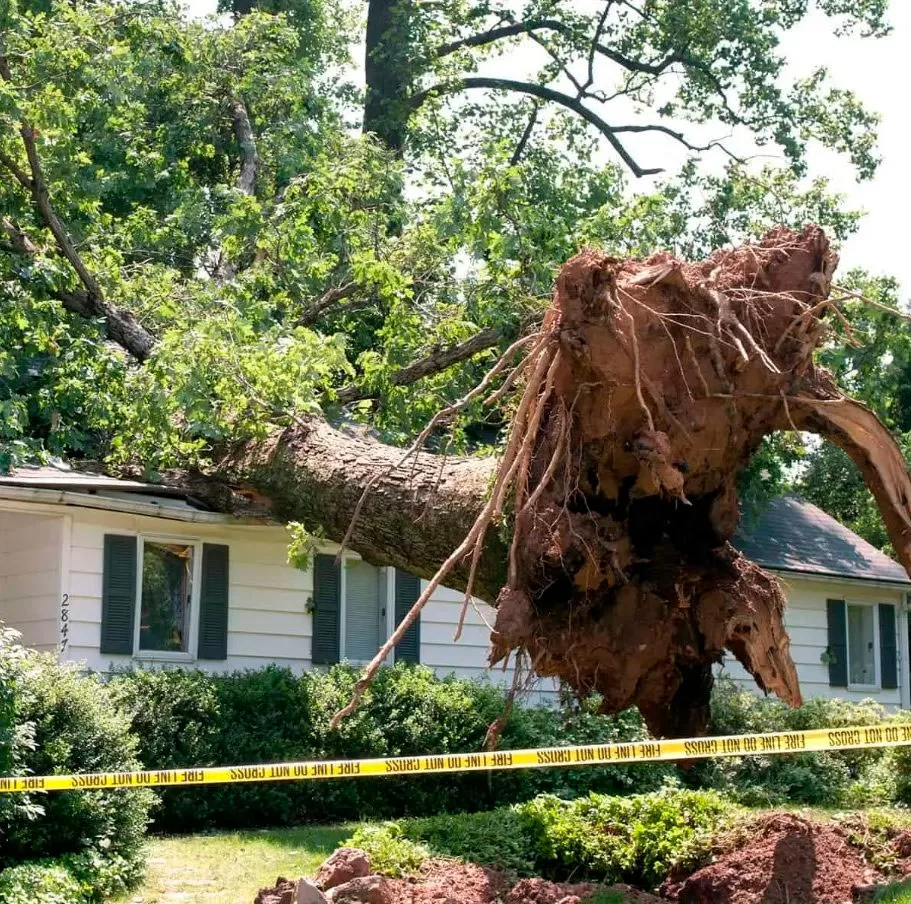
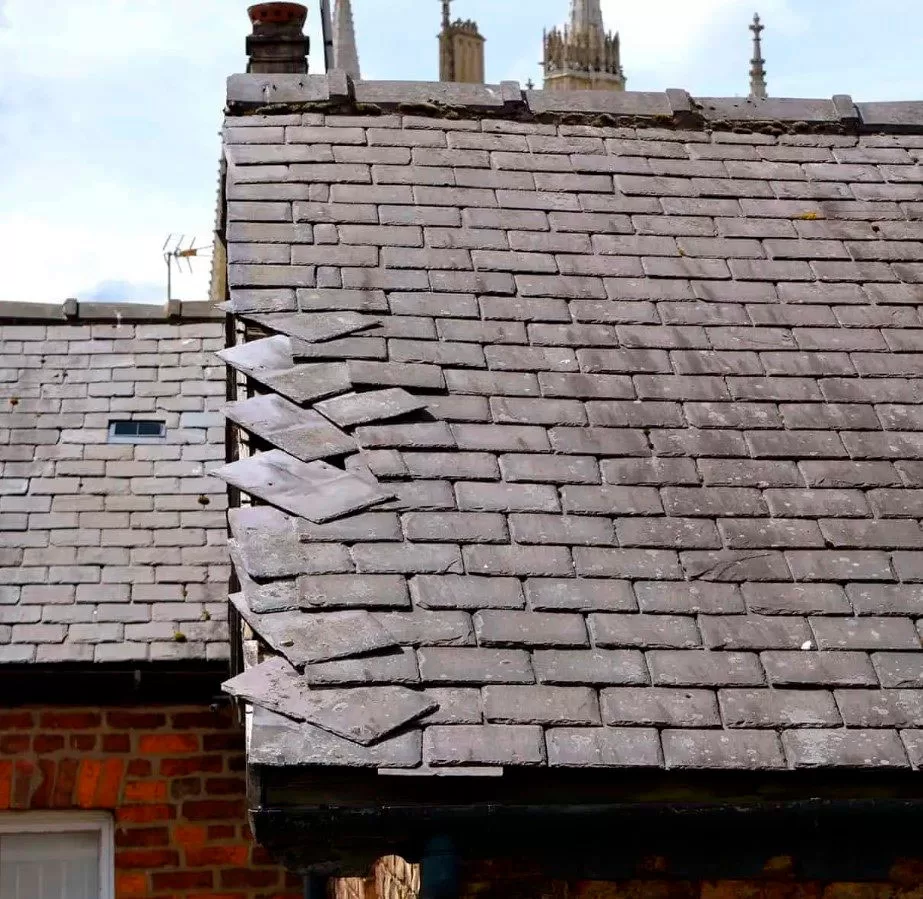
Property Types and Home Areas that are at Increased Risk for Wind Damage
Anyone who lives in an area that frequently gets thunderstorm activity, like we do in Florida, is at an increased risk of having wind damage occur to their structure resulting from damaging winds or straight-line winds. Additionally, it Is important to remember that although a structure may look sound to the naked eye after a severe storm with damaging winds that it may not be safe to inhabit. Over time, wind damage can impact the stress points of the roof and compromise the structure. Only a trained professional, like those at Whale Roofing and Construction, can fully determine the extent of the damage and the reparations needed to fix it.
Wind damage also does not occur in a uniform fashion. The corners of your home are more susceptible to damage caused by wind more so than the center of your home. A storm may seem relatively minor in and of itself but when you accumulate several storms/wind damage over a period of time can cause a chain reaction that turns a small roof repair into a large overhaul. Ensuring that stress points and other possible vulnerable areas are frequently checked and well maintained is paramount in decreasing your chances of your home being damaged by wind.
Proactive Wind Damage Protection
There are a few tips to help keep your property more protected from wind damage prior to a storm:
- Using mulch or light weight landscaping materials over rock/gravel to decrease hard/heavy debris.
- Ensuring that trees are kept trimmed and directly off of the structure
- Regular roof inspections to keep up on maintenance
- During storm season removing all potential flying hazardous objects from your property
- Having proper home owner’s insurance coverage that will cover wind damage
- Document (with pictures/video) the condition of your property as well as other home assets before a storm hits! This is essential if damage does occur. Trust us- you’ll thank us later!
Even if you follow all of the above tips, it is still possible to encounter wind damage from a storm.
If you believe your structure may have been damaged (even minimally), contact Whale Roofing and Construction right away for an inspection! 561-859-9848
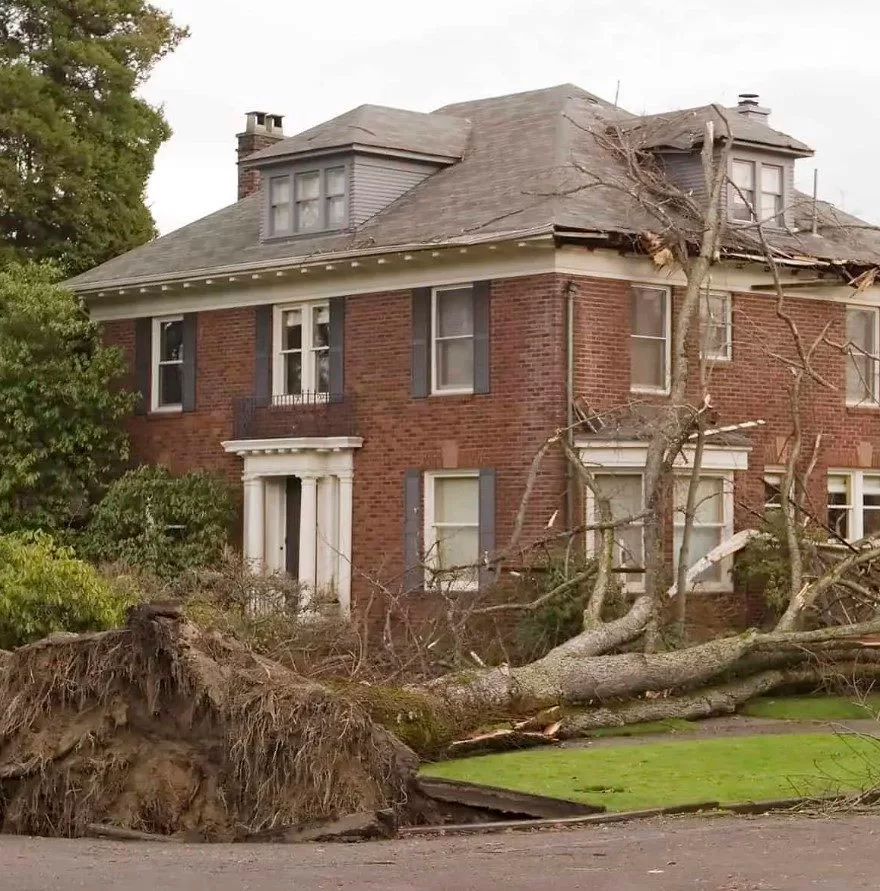
Property Types and Home Areas that are at Increased Risk for Wind Damage
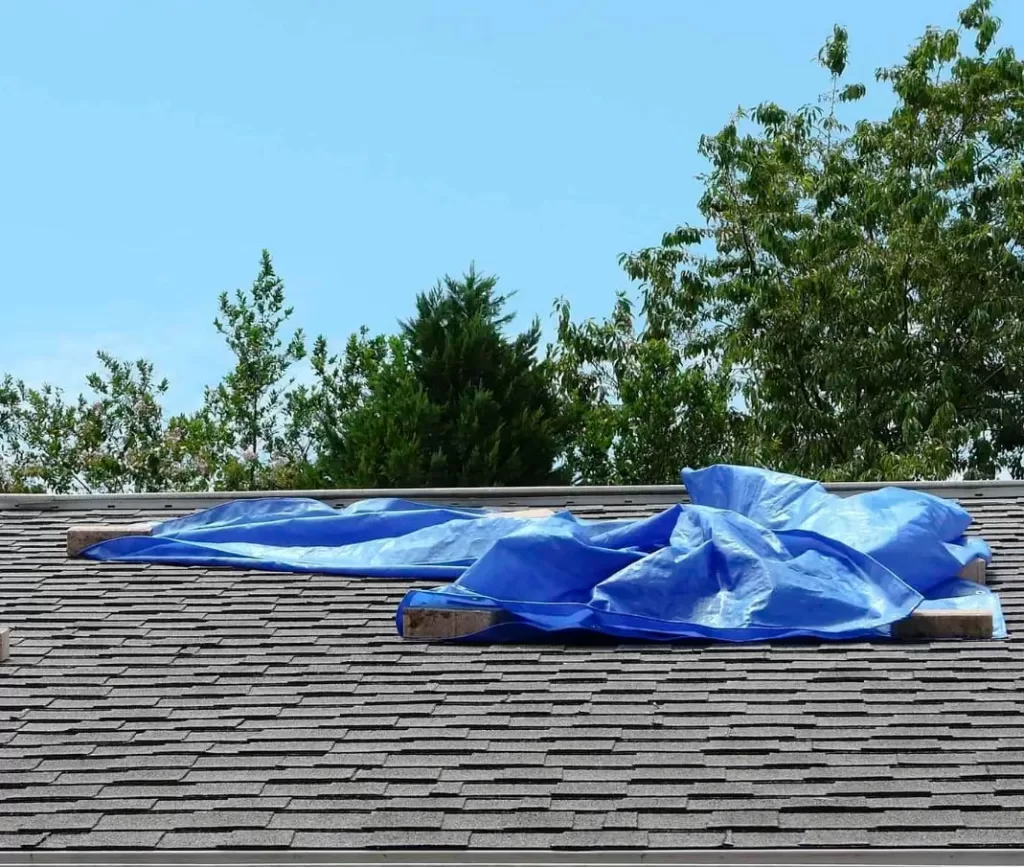
After a bad storm, you may feel uneasy as you see debris, fallen tree branches, and other potential damage to and around your home. Be sure that it is safe to exit your home before doing a self-inspection of your property. There are several places you will want to check to assess for damages:
- Check to make sure all of your windows are intact and that if there is broken glass that it is safely removed from the area and have corresponding window appropriately boarded until replaced.
- Gutters/downspouts are common areas where debris gets clogged. If left unchecked, can cause water to back up and can create more problems in the future.
- Fallen trees or large debris objects should be identified and removed by a professional with the proper equipment and experience.
- Look at your roof (exterior), specifically look for missing or damaged tiles/shingles, stress points, chimney areas, roof flashing, or ventilation pipes.
- From the interior of your home, check the attic for leaks as well as the ceilings and walls for water spots, peeling, or cracking.
If you are unsure if your structure has sustained any damage or you are unclear about the extent of damage, it is important to immediately call a roofing professional to get a thorough inspection completed. Whale Roofing and Construction is always here for you – call us today! 561-859-9848
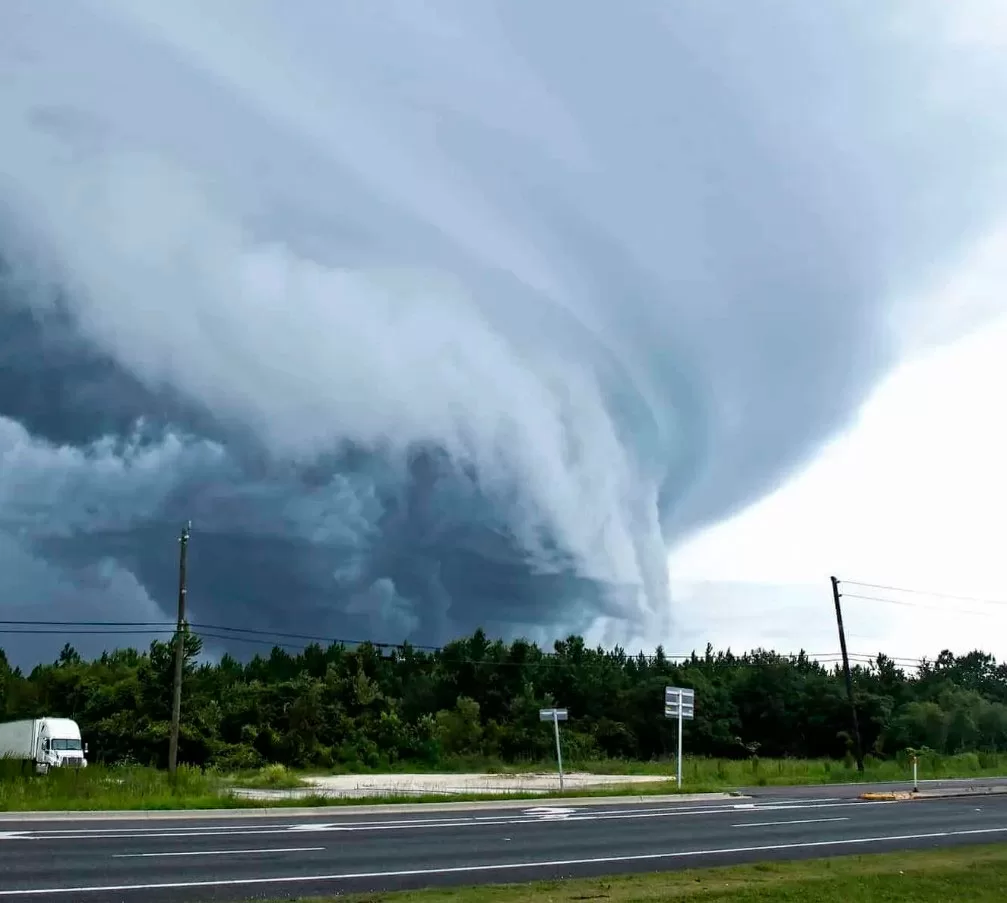
Types of Damage to Your Structure
Different structures may incur different types of damage. For example: on a shingle roof, the shingles may lift or curl, with a tile roof, tiles may be broken or missing, for a flat roof, there may be cracks or tears. Here’s what to look for:
- Cement Tiles: broken, damaged, missing
- Wood Shingles: missing, mold/decay, splitting
- Flat Roof: tears, cracks, uneven/bubbled up areas- if you had any areas previously patched be sure to recheck those areas as they are more susceptible to damage.
- Roofing Cement: uneven, crumbled
- Fascia/Soffits/Vents: clogs, damaged vents, stains, softness to touch, stains
- Flashing: loose, punctures, tears or rippling – make sure to check the corners
- Gutters: leaking seams, sagging, missing sections, rust
- Chimney: flashing damage around the chimney, damaged brick, cap damage, cracks
If you see any of these types of damages to your structure, it is advisable to get a professional opinion on how to remediate it. Whale Roofing and Construction can take care of all of your damage needs from a repair to a full replacement. Call us today! 561-859-9848
I See Roof Damage Now What?
The storm is over, you have completed a self-inspection of your property, and you have identified damage to your roof- Here are some important steps to keep in mind:
DOCUMENT THE DAMAGE!!! – This point cannot be stressed enough! Before you move away the debris or pull out a tarp, be sure to take as many photos and videos to document all damaged areas. Having this documentation (especially if you heeded our warning about getting the before photos/videos) will be hugely important when submitting a claim to insurance.
Depending on the extent of damage, you may be able to handle some repairs independently. If the problem is localized and is something you feel comfortable handling DIY just keep in mind that:
- A temporary fix with a roof is a gamble. Although it may be tempting to just throw a tarp over it and wait out the stormy season, damages can progress after the initial storm if not addressed properly.
- Other costs may increase from not professionally fixing the original problem. For example: a major increase in your electric bill after storm damage can indicate that the ventilation system in your roof may have been damaged.
- Get professional help! Call Whale Roofing and Construction to get an inspection right away. If damages are identified we will have the appropriate resources to get your structure secure until a more permanent fix can be done.
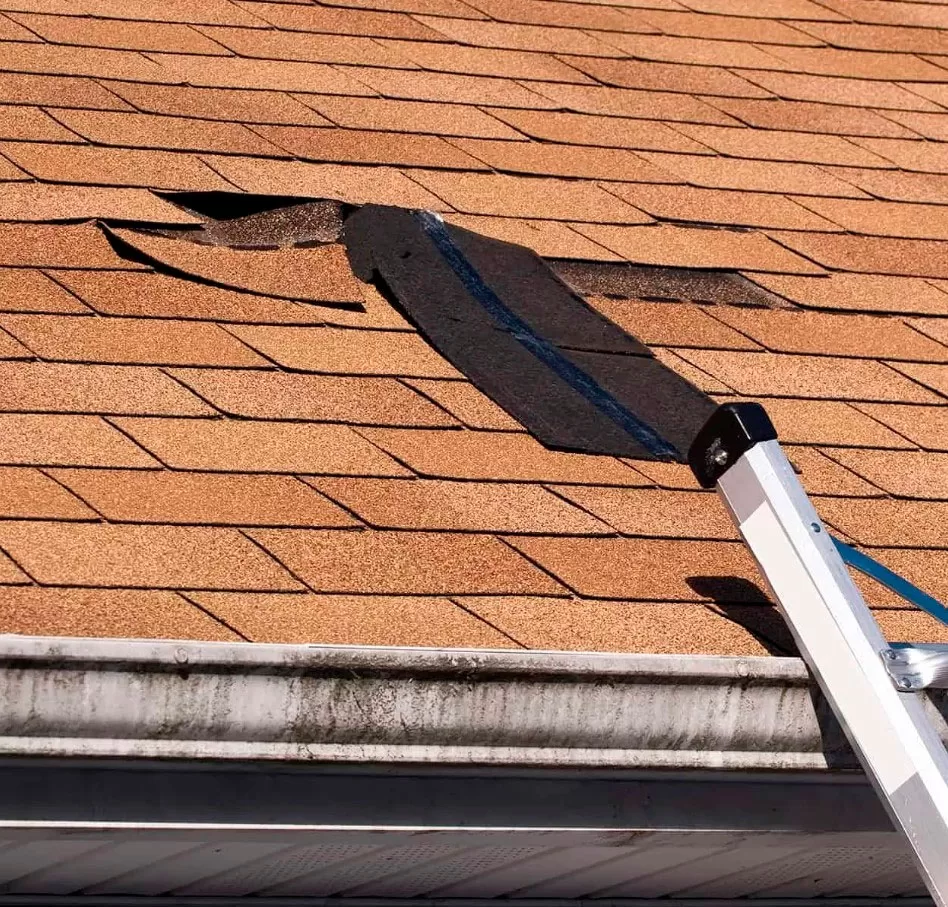
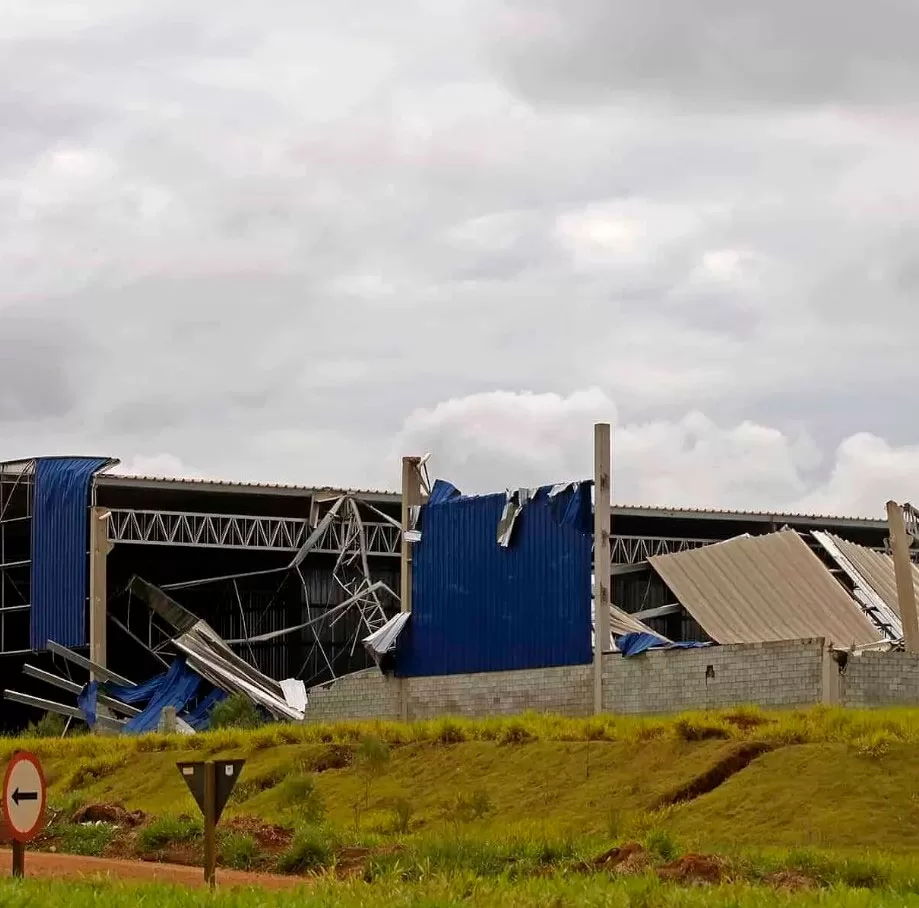
Can I repair it myself?
Although it is possible to make some repairs yourself- if it is more than a simple patch, then you probably shouldn’t. Damages requiring more than a simple patch could have further extensive damage that should be done by a professional.
Wind damage from a storm may also include the need to have large debris removed, broken glass windows or doors that will need boarding, and roof damage that may require immediate tarping/other protective covering. It can also cause structural damage to essential home functions such as electrical panels, gas leaks, etc. These areas if damaged should be exclusively handled by a utility company! Do not attempt to do these repairs yourself as you risk electrocution, fires, or explosions.
If you do decide to take on some repairs yourself remember that safety is of utmost importance! Wear protective clothing (long sleeve shirts/pants), proper footwear like boots (steel toed if possible), and work gloves if touching debris. Common items you may need to complete a repair include tarps, plywood, ropes/bungee cords, heavy items to weigh things down.
Most importantly- before you take on a DIY roof repair, be sure to document everything prior to any work you do! That way if later you decide to file a claim with your home owner’s insurance company you will have what you need.
And when the going gets tough- call Whale Roofing and Construction! We are industry backed with a proven track record of customer satisfaction. We work with you, your insurance company, and public adjusters to get your roof repaired or replaced! 561-859-9848
Finding the Right Contractor
A common industry problem that happens far more often that anyone would like is that many contractors out there that will take your money and not follow through on the job. Don’t get scammed! For a reliable and trustworthy roofing company that has experience with wind damage, Whale Roofing and Construction has got your back! We are licensed and insured and are committed to our work. Ask us for past client references read our excellent Google reviews!
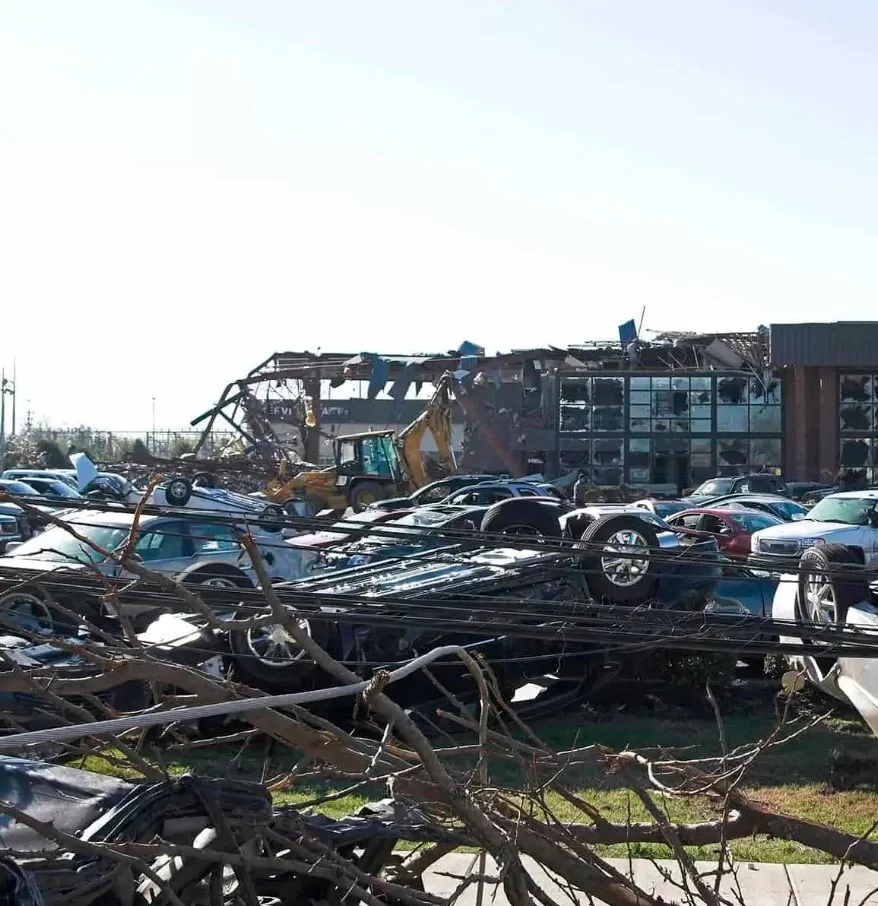
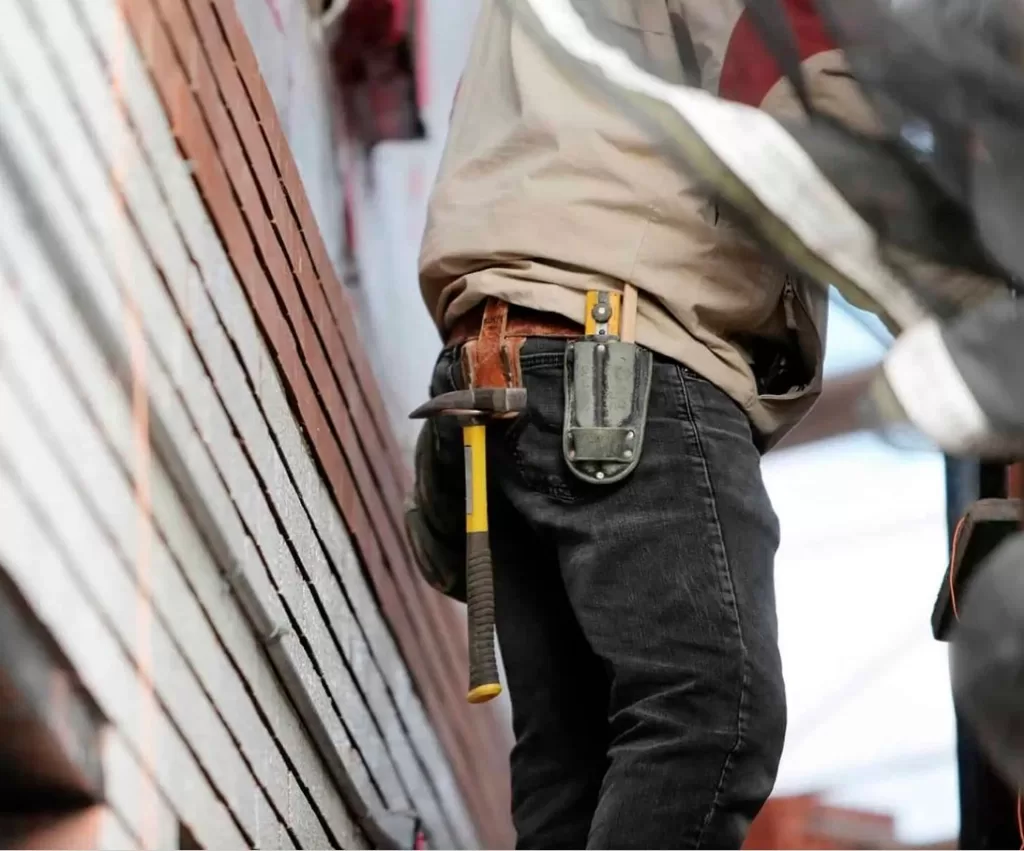
The Repair Replacement Process and Beyond
- The repair/replacement process requires a roofing professional to first come out and assess the damages and prepare an estimate.
- Once an estimate is prepared, the property owner can then decide if they want to file a claim with their insurance or pay directly to the contractor.
- If you decide to file a claim, it is highly recommended that a public adjuster come out and complete an evaluation of your home and obtain documentation (photos, videos, etc.). This will help ensure that you get the maximum amount paid for your damages by insurance.
- A claim will then be filed and a timeline can be generated for your repairs.
- Immediate needs are handled right away to secure your structure.
- It is imperative that the appropriate steps are taken in order for the insurance company to pay out. If you make no attempt to secure the structure after a storm, further damages can result, making it easy for insurance companies to deny your claim.
- Other non-emergent repairs are then scheduled at earliest convenience.
- Permits are filed.
- Replacement roofs are given color and material options which are then subsequently ordered.
- New roofing is then installed.
- In the background the public adjuster, contractor, and insurance company are all working simultaneously to ensure a smooth project.
Whale Roofing and Construction has an excellent reputation in the community and has been in the industry for over a decade. If you have any questions or concerns about your roof or the process for repair/replacement give us a call today! 561-859-9848
